Calcium and Vitamin D: Protecting Bone Health in Menopause
Introduction
Menopause is one of the most transformative phases in a woman’s life. Hormones shift, metabolism slows, and energy often fluctuates. But one of the most silent—and most serious—changes happens deep inside your body: your bones begin to lose density.
This process, called osteopenia or osteoporosis when severe, is one of the most significant long-term health concerns during menopause. But the good news is that two key nutrients—calcium and vitamin D—can dramatically reduce your risk of bone loss and help preserve strength and mobility for decades to come.
Let’s explore how hormonal changes affect your skeleton, why these nutrients are non-negotiable, and how to integrate them effectively into your daily routine for lifelong resilience. 🌤️
Looking for supplements for This? Click here.
🌸 The Hormonal Shift That Changes Everything

Before menopause, estrogen plays a crucial role in maintaining bone density. It helps your body regulate calcium levels, slow bone breakdown, and encourage new bone formation. When estrogen declines after menopause, this balance is disrupted.
The result is accelerated bone turnover—meaning your body breaks down bone faster than it builds it. Most women lose up to 20% of their bone mass in the first five to seven years after menopause. That’s a staggering change, and it explains why postmenopausal women are far more likely to experience fractures of the hip, wrist, and spine.
This loss doesn’t just affect structure—it affects confidence, mobility, and quality of life. Many women describe feeling “more fragile” or noticing subtle posture changes long before they’re officially diagnosed with osteoporosis.
That’s where calcium and vitamin D come in—not as a cure, but as nutritional armor to help you stay strong and independent.
🧬 Understanding How Bone Remodeling Works
Your bones aren’t static—they’re living tissue that constantly renews itself through a process called remodeling. Specialized cells called osteoclasts break down old bone, while osteoblasts build new bone in its place.
During youth, bone formation exceeds breakdown. But by your mid-30s, this balance begins to tip. Menopause accelerates that shift dramatically. Without enough estrogen, osteoclast activity increases, and bones lose more minerals than they can replace.
Calcium provides the raw material for bone structure, while vitamin D ensures that your body can absorb and use it effectively. Think of calcium as the bricks, and vitamin D as the builder that knows where each one goes. Without both, the structure weakens over time.
🥛 Calcium: The Foundation of Bone Strength
Calcium is the most abundant mineral in your body—99% of it is stored in your bones and teeth. It gives your skeleton its rigidity and also plays a vital role in nerve transmission, muscle contraction, and heart function.
When your diet doesn’t provide enough calcium, the body compensates by pulling calcium from your bones to maintain proper blood levels. Over time, this leaching effect leads to weaker, more brittle bones.
During menopause, your calcium needs increase significantly. The National Institutes of Health recommends about 1,200 mg of calcium daily for women over 50. But getting that amount through diet alone can be challenging.
Good dietary sources include yogurt, cheese, milk, sardines, almonds, and leafy greens like kale and collard greens. Yet even with a calcium-rich diet, absorption can be limited by age, digestive efficiency, and other factors like caffeine or high sodium intake.
That’s why targeted supplementation becomes so important—especially when combined with vitamin D for optimal absorption.
☀️ Vitamin D: The Calcium Gatekeeper
Vitamin D isn’t technically a vitamin—it’s a hormone your body produces when your skin is exposed to sunlight. It’s essential for calcium absorption, bone growth, and immune function. Without enough vitamin D, even large doses of calcium can’t do their job properly.
When vitamin D levels drop, your intestines absorb less calcium, forcing your body to pull more from bones to maintain equilibrium. The result: bone density declines, and fracture risk increases.
Low vitamin D is widespread, especially among people who spend little time in the sun or live in northern climates. As women age, the skin also becomes less efficient at synthesizing vitamin D.
That’s why most experts recommend 1,000–2,000 IU (25–50 mcg) of vitamin D3 daily for postmenopausal women, though your ideal dosage depends on blood levels. Testing your 25-hydroxy vitamin D through a simple blood test can help you personalize your supplementation plan.
🧩 The Calcium–Vitamin D Connection
Calcium and vitamin D are inseparable when it comes to bone health. You can’t fully benefit from one without the other.
Here’s why:
Vitamin D boosts calcium absorption in the gut. Without it, you might absorb only 10–15% of dietary calcium.
Calcium maintains structural integrity, but vitamin D directs where it goes—into bones, not soft tissues.
Both regulate parathyroid hormone (PTH), which controls bone turnover and calcium balance.
This synergy is why most bone-support supplements include both nutrients together. Clinical studies confirm that this combination significantly reduces fracture risk compared to calcium alone.
🌿 Beyond Calcium and D: The Supporting Nutrients
While calcium and vitamin D are the cornerstones, your bones also need other nutrients to function optimally.
Magnesium helps convert vitamin D into its active form and promotes proper calcium distribution. Without enough magnesium, calcium may deposit in soft tissues rather than bones.
Vitamin K2 (especially MK-7) activates osteocalcin, a protein that binds calcium to bone matrix. It ensures that calcium goes to the right place—your skeleton, not your arteries.
Zinc, boron, and manganese also play supporting roles in collagen formation and mineralization, helping your bones stay flexible yet strong.
These cofactors explain why high-quality bone health formulas often go beyond the simple “calcium + D” duo.
💪 Exercise and Lifestyle: Building Stronger Bones Naturally
Supplements can’t work alone. Bones respond to mechanical stress—that means they get stronger when you use them. Weight-bearing and resistance exercises signal your body to increase bone formation.
Walking, stair climbing, dancing, and strength training all stimulate bone density, especially in critical areas like the hips and spine. Even short daily sessions can make a measurable difference.
Balance exercises such as yoga or Pilates help prevent falls—a key concern for women with fragile bones.
In addition, limiting alcohol, caffeine, and smoking is crucial. These habits can interfere with calcium absorption and accelerate bone loss.
Hydration also matters—bone tissue contains water, and dehydration can make it more brittle over time.
🧘 Emotional Health and Bone Health
It may sound surprising, but stress directly impacts bone density. Chronic cortisol elevation promotes calcium loss and inhibits new bone formation.
Menopause is often accompanied by emotional turbulence—anxiety, mood swings, or sleep disruption—that further taxes your adrenal system.
Integrating stress management techniques like breathwork, mindfulness, or restorative yoga can support both your nervous system and your bones. When cortisol normalizes, bone metabolism improves.
A calm mind truly supports a stronger body. 🕊️
🥗 Dietary Patterns That Support Bone Health
Your daily eating habits profoundly influence how well your body absorbs and uses nutrients. A diet rich in whole foods, lean proteins, healthy fats, and vegetables supports the acid-base balance necessary for bone maintenance.
High-protein foods like eggs, fish, and legumes provide amino acids needed for collagen synthesis—the flexible protein matrix that gives bone its resilience.
Fruits and vegetables rich in potassium and antioxidants, such as berries, citrus, spinach, and broccoli, help reduce inflammation and neutralize acids that could otherwise leach calcium from bones.
A Mediterranean-style diet—rich in olive oil, nuts, fish, and greens—has been shown in studies to correlate with higher bone density and lower fracture risk in postmenopausal women.
🩸 How to Test and Monitor Bone Health

Bone loss often occurs silently, without symptoms until a fracture happens. That’s why early testing is essential.
A DEXA scan (dual-energy X-ray absorptiometry) measures bone mineral density (BMD) and compares it to the average for young, healthy women. The resulting “T-score” indicates whether you have normal bone mass, osteopenia, or osteoporosis.
Your doctor may also check:
Vitamin D levels (25-hydroxyvitamin D test)
Calcium and parathyroid hormone (PTH) levels
Markers of bone turnover like osteocalcin or CTX
By tracking these numbers, you can personalize your nutrition and supplement plan—and see whether your efforts are making a measurable difference.
🌞 Sunlight, Skin, and the Vitamin D Dilemma
While the sun is your most natural source of vitamin D, many women avoid direct sunlight due to skin cancer concerns or use heavy SPF protection, which blocks vitamin D synthesis.
To balance safety and benefit, experts suggest 10–20 minutes of sun exposure on bare arms and legs a few times per week, depending on your skin tone and location.
However, since natural synthesis varies by season, latitude, and skin pigmentation, supplementation is often still necessary—especially in winter months or for those living above 35° latitude.
Vitamin D3 (cholecalciferol) is more potent than D2 (ergocalciferol) and better at raising serum levels. Taking it with a meal containing fat improves absorption.
💊 Choosing the Right Supplement Form
Not all supplements are created equal. For calcium, calcium citrate is often best absorbed, especially for women with lower stomach acid (common after 50). Calcium carbonate is cheaper but requires more acid for absorption and is best taken with meals.
Vitamin D3 supplements come in capsules, liquids, or gummies. Combining them with magnesium and K2 enhances bioavailability.
Timing also matters. Splitting calcium doses—such as 600 mg in the morning and 600 mg at night—improves absorption and reduces digestive discomfort.
If you already take multivitamins, check labels to avoid excessive calcium intake, which could cause constipation or interact with thyroid or heart medications.
Always consult your healthcare provider before making changes, especially if you’re taking prescription drugs or have kidney issues.
Looking for supplements for This? Click here.
🧠 Calcium, Vitamin D, and Brain Health
Emerging research shows that calcium and vitamin D support not just bones, but also neurological and cognitive health.
Vitamin D receptors are found in the brain, where they influence neurotransmitter production and protect against inflammation. Deficiency has been linked to depression, cognitive decline, and poor sleep quality—all of which often accompany menopause.
Calcium plays a role in neuronal signaling and muscle-nerve coordination, helping reduce cramps and maintaining steady mood regulation.
In this way, nurturing bone health with calcium and vitamin D also strengthens the mind-body connection—helping you stay mentally resilient through the emotional waves of menopause.
🌺 Integrating Everything: A Lifestyle of Strength
Protecting bone health isn’t just about taking a supplement—it’s about creating a lifestyle of support.
Picture your daily routine as a web of small actions that add up:
Morning sunlight and a calcium-rich breakfast
Midday movement or a walk in the park
A few minutes of breathwork or gratitude journaling to lower stress
Evening magnesium and vitamin D3 with dinner for optimal recovery
Each habit strengthens your foundation a little more. Over time, this consistency transforms not only your bones but also your confidence, vitality, and long-term well-being.
🌷 The Emotional Meaning of Bone Health
Bone health is also symbolic. Bones are our inner framework—the part of us that literally holds us up. When menopause shakes that foundation, it can feel like losing part of your stability.
But rebuilding bone density can also be a metaphor for reclaiming your strength. Every nutrient, every workout, every breath becomes a declaration: “I’m still here, strong and growing.”
Calcium and vitamin D are not just biochemical helpers; they are allies in resilience, supporting your structure—inside and out—as you evolve into this next chapter of womanhood.
💫 Key Takeaway
Calcium gives your bones the strength to bear life’s weight. Vitamin D ensures your body uses that strength wisely. Together, they are the foundation for longevity, vitality, and confidence through menopause and beyond.
Nourish them, move often, breathe deeply, and rest well—and your bones will carry you gracefully for decades to come. 🦋
📚 References
Weaver CM et al. (2016). “Calcium plus vitamin D supplementation and risk of fractures: an updated meta-analysis.” Osteoporosis International, 27(1): 367–376.
Cashman KD et al. (2011). “Vitamin D deficiency in Europe: pandemic?” American Journal of Clinical Nutrition, 93(4): 1025–1035.
Heaney RP et al. (2003). “Vitamin D and calcium interactions: functional outcomes.” American Journal of Clinical Nutrition, 77(4): 830–834.
Bischoff-Ferrari HA et al. (2005). “Vitamin D and bone health: optimal levels and supplement recommendations.” Journal of Bone and Mineral Research, 20(12): 2257–2263.
Holick MF. (2007). “Vitamin D deficiency.” New England Journal of Medicine, 357: 266–281.
Dawson-Hughes B et al. (2010). “Dietary patterns and bone health.” Nutrients, 2(10): 1086–1105.
Rizzoli R et al. (2014). “Nutrition and bone health in postmenopausal women.” Osteoporosis International, 25(10): 2281–2293.
Kanis JA et al. (2021). “European guidance for the diagnosis and management of osteoporosis in postmenopausal women.” Osteoporosis International, 32: 1–42.
Related Posts
-
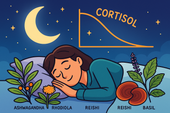
Adaptogen Stacks for Better Sleep and Lower Stress Hormones
Adaptogens can help your body recover from stress and sleep better by regulating key hormones like cortisol and adrenaline. 🌿 Learn how adaptogen stacks work to restore balance, calm the mind, and rebuild resilience — so you can rest deeply and wake renewed. ✨
-
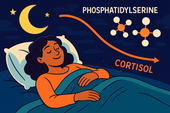
Phosphatidylserine for Nighttime Cortisol Control
When stress hormones stay high at night, deep rest becomes impossible. 🌙 Discover how phosphatidylserine helps calm the brain, reduce nighttime cortisol, and restore healthy sleep rhythms — so you can wake up peaceful, clear, and recharged. ✨
-
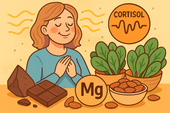
Magnesium for Stress Relief and Cortisol Reduction
Magnesium is one of the most powerful natural tools for stress relief. 🌿 This essential mineral calms your nervous system, lowers cortisol, and helps your body recover from chronic tension. Learn how magnesium replenishes balance, improves sleep, and restores inner peace — naturally. ✨
-
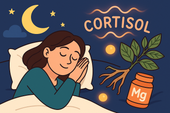
Supplements to Improve Sleep by Balancing Cortisol
When cortisol stays high at night, sleep becomes a struggle. 🌙 Discover natural supplements that calm the nervous system, lower stress hormones, and restore your body’s natural rhythm. From magnesium and ashwagandha to L-theanine and phosphatidylserine, learn how to build deeper, more restorative rest. 🌿
-
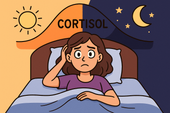
Cortisol and Sleep: Why Stress Keeps You Awake
When stress keeps your body in fight-or-flight mode, cortisol refuses to calm down — and sleep becomes impossible. 🌙 Learn how elevated cortisol disrupts your circadian rhythm, suppresses melatonin, and turns restless nights into exhaustion. Discover how to restore balance and reclaim deep rest. ✨
-
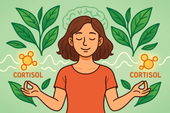
L-Theanine for Cortisol Balance and Anxiety Relief
L-Theanine — the calming amino acid from green tea — helps quiet the mind and balance cortisol, the body’s key stress hormone. 🌿 Learn how it promotes calm focus, eases anxiety, and supports deep rest without sedation, backed by modern research and centuries of tradition. ✨
-
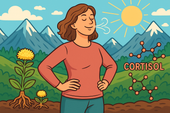
Rhodiola Rosea and Stress Resilience: A Natural Cortisol Regulator
Rhodiola rosea is one of nature’s most powerful tools for resilience. 🌿 This Arctic root helps balance cortisol, fight fatigue, and sharpen focus — keeping you calm yet energized even under stress. Discover the science behind Rhodiola’s adaptogenic power and how it helps your body thrive under pressure. ✨
-
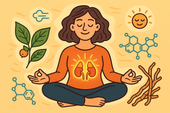
Ashwagandha for Cortisol Balance: What the Science Says
Ashwagandha helps your body recover from chronic stress by calming the adrenal system and balancing cortisol — your key stress hormone. 🌿 Learn what science says about this powerful adaptogen, how it restores energy and focus, and why it’s one of nature’s most effective tools for modern stress relief. ✨
-

Supplements That Naturally Lower Cortisol Levels
When cortisol levels calm, your energy transforms — no more crashes or jitters, just steady focus and inner peace. 🌿 Learn which natural supplements and habits lower stress hormones, boost calm energy, and help your body thrive with balance instead of burnout. ✨
-
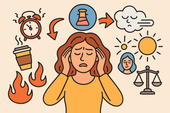
What Is Cortisol Imbalance? Symptoms You Shouldn’t Ignore
Cortisol — your body’s main stress hormone — keeps you alert and energized, but when it’s out of balance, it can drain your health. 🌿 Learn the signs of cortisol imbalance, from fatigue and anxiety to sleep disruption and stubborn weight gain, and discover how to restore calm, energy, and hormonal harmony naturally. ✨
-
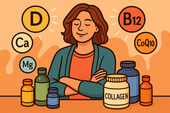
The Best Daily Multivitamins for Menopausal Women
Menopause brings new nutritional needs that your old vitamin routine may no longer meet. 🌿 Discover how the right daily multivitamin can boost energy, balance mood, support bone and heart health, and keep your skin glowing. Learn which nutrients truly matter — from vitamin D to magnesium and B12 — to feel strong and vibrant every day. ✨
-

Antioxidants and Menopause: Fighting Inflammation Naturally
During menopause, oxidative stress and inflammation can quietly accelerate aging, fatigue, and skin changes. 🌿 Learn how antioxidants — from vitamins C and E to polyphenols in berries and green tea — help neutralize free radicals, reduce inflammation, and restore balance naturally. Discover the science of radiant, resilient aging. ✨
-
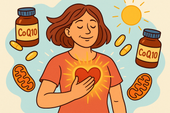
How CoQ10 Supports Heart Health After Menopause
After menopause, heart health becomes more important than ever. ❤️ Discover how CoQ10 — your body’s natural energy molecule — supports cardiovascular strength, restores vitality, and protects against oxidative stress. Learn how this essential nutrient helps keep your heart energized, balanced, and resilient through every stage of life. 🌿
-
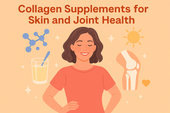
Collagen Supplements for Skin and Joint Health Post-Menopause
After menopause, collagen loss affects both skin elasticity and joint comfort — but supplements can help rebuild from within. 🌸 Learn how collagen peptides, vitamin C, and other nutrients work together to restore firmness, reduce stiffness, and keep you glowing and mobile well into your next chapter. ✨
-
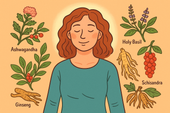
Adaptogens for Energy and Resilience During Menopause
Feeling drained or emotionally scattered during menopause? 🌿 Discover how adaptogenic herbs like Ashwagandha, Rhodiola, and Ginseng can restore energy, balance cortisol, and build emotional resilience. Learn how these natural allies work with your body—not against it—to help you stay strong, focused, and calm through life’s hormonal changes. 🌸
-

Supplements That Help Beat Menopause Fatigue
Menopause fatigue can feel like more than tiredness—it’s a total energy crash. This guide explores how specific supplements, mindful breathwork, and therapy can help restore balance. Learn how nutrients like B vitamins, magnesium, and adaptogens rebuild your stamina, while breathwork and emotional healing calm your nervous system and bring vitality back to your days. 🌿✨
-

Herbal Blends for Menopausal Restlessness: Finding Calm in Transition
Herbal blends bring the wisdom of nature into moments of rest and renewal. Discover how soothing herbs like chamomile, lemon balm, and ashwagandha work together to calm menopausal restlessness, balance hormones, and invite deep relaxation. 🌿💫
-
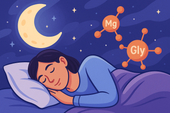
Magnesium + Glycine for Deep Sleep During Menopause
Nutrients like magnesium, glycine, and B vitamins form the foundation for deep, restorative sleep during menopause. Discover how these natural compounds calm your nervous system, balance hormones, and help you wake up refreshed and recharged. 🌿💤
-

Melatonin and Menopause: Restoring Your Sleep Cycle
Nutrients are the foundation of hormone balance and energy. Learn how vitamins, minerals, and whole foods like greens, salmon, and berries nourish women’s bodies during menopause and beyond — restoring vitality, mood, and strength. 🌿🥗
-
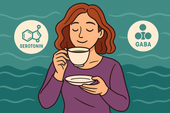
How L-Theanine Helps With Menopausal Anxiety
Science continually deepens our understanding of the human body, from hormones to neurotransmitters. Discover how evidence-based research shapes modern wellness — bridging natural medicine, neuroscience, and hormone balance for healthier living. 🔬🌿
-

Can Ginkgo Biloba Improve Memory in Menopausal Women?
Hormone therapy can be a powerful tool for easing menopause symptoms and restoring balance. Learn how it works, the types available, and how to combine it safely with lifestyle and natural support for optimal well-being. 🌸💊
-

B Vitamins for Mental Clarity During Menopause
Nutrients are the foundation of mental and physical balance during menopause. Discover how vitamins, minerals, and whole foods like leafy greens, fish, nuts, and citrus can fuel energy, clarity, and calm while supporting hormonal health. 🌿✨
-
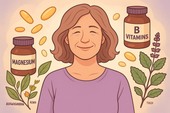
Mood Swings and Menopause: Natural Nutrient Support
Probiotics do more than support digestion — they help balance mood, hormones, and immunity too. Learn how a healthy gut microbiome can ease menopause symptoms, boost energy, and improve emotional resilience naturally. 🌿🦠
-

Brain Fog in Menopause: Supplements That May Help
Supplements can be powerful allies in restoring balance, energy, and focus—especially during menopause. Learn how nutrients like omega-3s, vitamin D, magnesium, and herbal adaptogens work together to support brain health, reduce stress, and promote lasting vitality. 🌿💊
-

Adaptogen Stacks for Reducing Night Sweats
Hormone detox isn’t about cleansing your body—it’s about restoring flow. Learn how the liver, gut, and endocrine systems work together to eliminate hormone buildup and how herbs like milk thistle, dandelion, and schisandra support balance, clarity, and natural vitality. 🌿💫
-
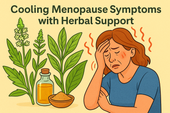
Cooling Menopause Symptoms with Herbal Support
Ashwagandha is one of nature’s most powerful adaptogens, helping women manage stress, sleep better, and balance hormones naturally. Discover how this ancient root supports calm energy, emotional resilience, and relief from menopause-related anxiety and fatigue. 🌿💫
-

Evening Primrose Oil and Menopause: What the Research Says
Hot flashes are one of the most common—and frustrating—symptoms of menopause. Discover what causes them, why the body’s “internal thermostat” becomes unbalanced, and the natural supplements and lifestyle shifts that can help you cool down, rest better, and feel more in control. 🔥💧
-

How Black Cohosh Helps with Menopausal Symptoms
Sleep disturbances are among the most exhausting symptoms of menopause—but they don’t have to rule your nights. Discover how natural strategies and calming supplements can help you fall asleep faster, stay asleep longer, and wake up feeling truly restored. 🌙💤
-

Natural Supplements That May Reduce Hot Flashes
Hot flashes can disrupt sleep, confidence, and daily comfort—but natural relief is possible. Discover the best research-backed supplements like black cohosh, red clover, and licorice root that may reduce hot flashes, balance hormones, and restore inner calm during menopause. 🌿💫
-

Omega-3s and Menopause: Supporting Mood and Inflammation
Omega-3 fatty acids are essential for hormonal harmony, brain function, and emotional balance—especially during menopause. Learn how these healthy fats reduce inflammation, support heart health, and restore calm, vitality, and focus through every stage of midlife. 🌊💫
-
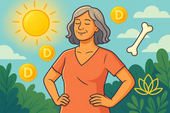
The Role of Vitamin D in Menopausal Health
Vitamin D plays a powerful role in menopausal health—supporting bone strength, hormone balance, and mood stability. Discover how optimizing your vitamin D levels can improve sleep, energy, and emotional well-being while protecting long-term vitality through every stage of menopause. 🌞💪
-
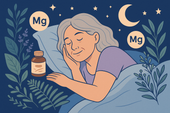
Magnesium for Menopause: Relaxation, Sleep, and Hormonal Support
Self-regulation is the art of staying calm, centered, and in control—no matter what life throws your way. Learn how to strengthen emotional balance, manage stress responses, and cultivate inner peace through mindful techniques that reconnect your heart, body, and brain. 🌿💫
-
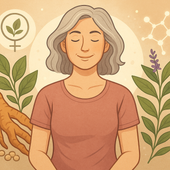
Can Adaptogens Like Ashwagandha Ease Menopausal Symptoms?
Brain fog during menopause can make even simple tasks feel overwhelming—but you’re not losing your sharpness, your hormones are simply shifting. Discover how adaptogens like ashwagandha and key nutrients can restore mental clarity, balance cortisol, and bring calm focus back to your day. 🌿🧠
-

Supplements That Support Hormonal Balance During Menopause
Herbal supplements have supported women’s health for centuries—and modern science is finally catching up. From ashwagandha and maca to red clover and rhodiola, discover how nature’s most trusted herbs can calm stress, balance hormones, and enhance energy through every life stage. 🌿✨
-
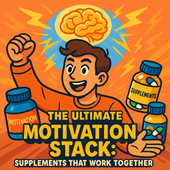
The Ultimate Motivation Stack: Supplements That Work Together
Discover how therapy helps restore motivation, focus, and emotional balance alongside supplement and mindset strategies. This empowering article explores how addressing thought patterns and emotional blocks through therapy can complement biochemical tools for long-term drive and well-being. 🧠💬
-

Entrepreneurial Drive: Can Supplements Help You Avoid Burnout?
Entrepreneurship demands energy, creativity, and mental resilience—but without balance, it leads to burnout. This in-depth article explores how nootropic supplements, adaptogens, and mindset tools can help entrepreneurs sustain motivation, manage stress, and keep their drive sharp for the long haul. 🚀💼
-

Supplements for Students: Staying Motivated Through Exams
Feeling burned out before finals? Discover how the right supplements can help students stay focused, calm, and motivated through exam season. This guide explores science-backed nutrients, brain-boosting herbs, and mindset tools that fuel clarity, memory, and stress resilience when it matters most. 🎓⚡
-
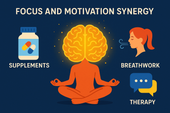
How Nootropic Stacks Can Enhance Drive and Focus Together
Discover how nootropic stacks can reignite both your drive and focus by balancing key neurotransmitters like dopamine and acetylcholine. This in-depth guide explores the science behind motivation, how supplements enhance cognitive performance, and how breathwork and therapy complete the picture for lasting mental clarity. 🧠✨
-
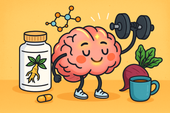
Natural Pre-Workout Supplements for Motivation and Mental Sharpness
Adaptogens are nature’s stress balancers 🌿 — powerful herbs like Ashwagandha, Rhodiola, and Holy Basil that help your body stay calm, focused, and resilient. By regulating cortisol and supporting energy balance, they boost motivation, endurance, and emotional stability — naturally. 🌞🧠
-
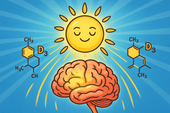
The Role of Vitamin D in Mental Drive and Ambition
Motivation is more than mindset — it’s energy in motion ⚡🧠. It comes from a balance of biology, emotion, and purpose. When your brain, body, and habits align, drive becomes effortless. Learn how to spark consistency, overcome dips, and build unstoppable momentum naturally. 🌿✨
-
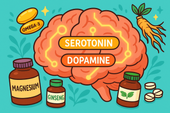
Serotonin, Dopamine, and Motivation: Can Supplements Really Help?
Ginseng is the ultimate vitality root 🌿⚡ — long praised for enhancing focus, energy, and motivation without the crash. By balancing stress hormones, boosting dopamine, and improving brain oxygenation, this adaptogenic powerhouse helps you feel clear, strong, and ready to take action. 🧠✨
-

How Ginseng Helps Support Drive, Motivation, and Energy
Ginseng is nature’s endurance root 🌿⚡ — a timeless adaptogen that fuels focus, drive, and resilience from the inside out. By balancing cortisol, boosting dopamine, and supporting mitochondrial energy, ginseng helps you feel clear, strong, and steady — no crash, just sustainable vitality. 🧠✨
-
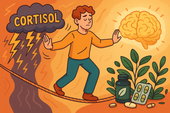
The Stress–Motivation Connection: Supplements That Balance Cortisol
Vitamin D — the “sunshine nutrient” ☀️ — plays a crucial role in mental health, motivation, and energy regulation. Low levels can lead to fatigue, low mood, and sluggish focus. Learn how sunlight, nutrition, and supplementation can restore your inner light and boost emotional balance naturally. 🌿🧠
-
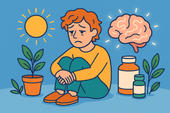
When Low Mood Drains Your Drive: Natural Support Options
Vitamin D is more than the “sunshine vitamin” ☀️ — it’s a key player in mood, motivation, and overall brain health. Low levels can lead to fatigue, low drive, and seasonal sadness. Learn how sunlight, supplements, and nutrition can help restore balance and lift your emotional energy naturally. 🌿🧠
-

How Adaptogenic Herbs Help You Stay Consistent
Adaptogens are nature’s resilience enhancers 🌿. From Ashwagandha to Rhodiola and Holy Basil, these herbs help your body adapt to stress, balance cortisol, and maintain steady energy. Learn how they build inner stability — keeping your focus, mood, and motivation consistent through life’s ups and downs. ⚡🧘
-
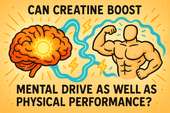
Can Creatine Boost Mental Drive as Well as Physical Performance?
IQ, or intelligence quotient, measures more than problem-solving — it reflects how efficiently your brain processes, adapts, and connects ideas 🧠⚡. While genetics play a role, lifestyle, nutrition, and brain health all influence cognitive performance. Learn how to support mental sharpness and cognitive growth naturally. 🌿✨
-
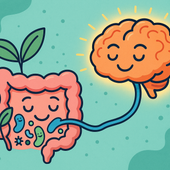
The Link Between Gut Health and Motivation: Probiotics Explained
Serotonin — the “feel-good” neurotransmitter 🌞 — plays a powerful role in mood, motivation, and overall emotional balance. Produced mostly in the gut, it connects digestion, happiness, and focus through the gut-brain axis. Learn how to naturally support serotonin for calmer energy and lasting motivation. 🌿✨
-
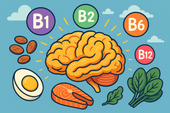
How B Vitamins Fuel Motivation and Energy at the Cellular Level
B vitamins are the body’s natural energy engines ⚡. They convert food into fuel, support dopamine for motivation, and power brain cells at the mitochondrial level. From B1 to B12, these nutrients help you stay focused, resilient, and full of drive — every single day. 🌿🧠
-
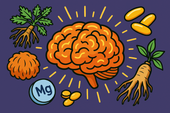
Supplements That Support Mental Endurance for Long Projects
Mindset is more than motivation — it’s the mental framework that shapes how you respond to challenges and pursue goals 🌿🧠. A growth mindset turns obstacles into opportunities, while a fixed mindset fuels self-doubt. Learn the science behind mental resilience and how to cultivate a mindset that sustains focus, creativity, and long-term success. ✨

















































